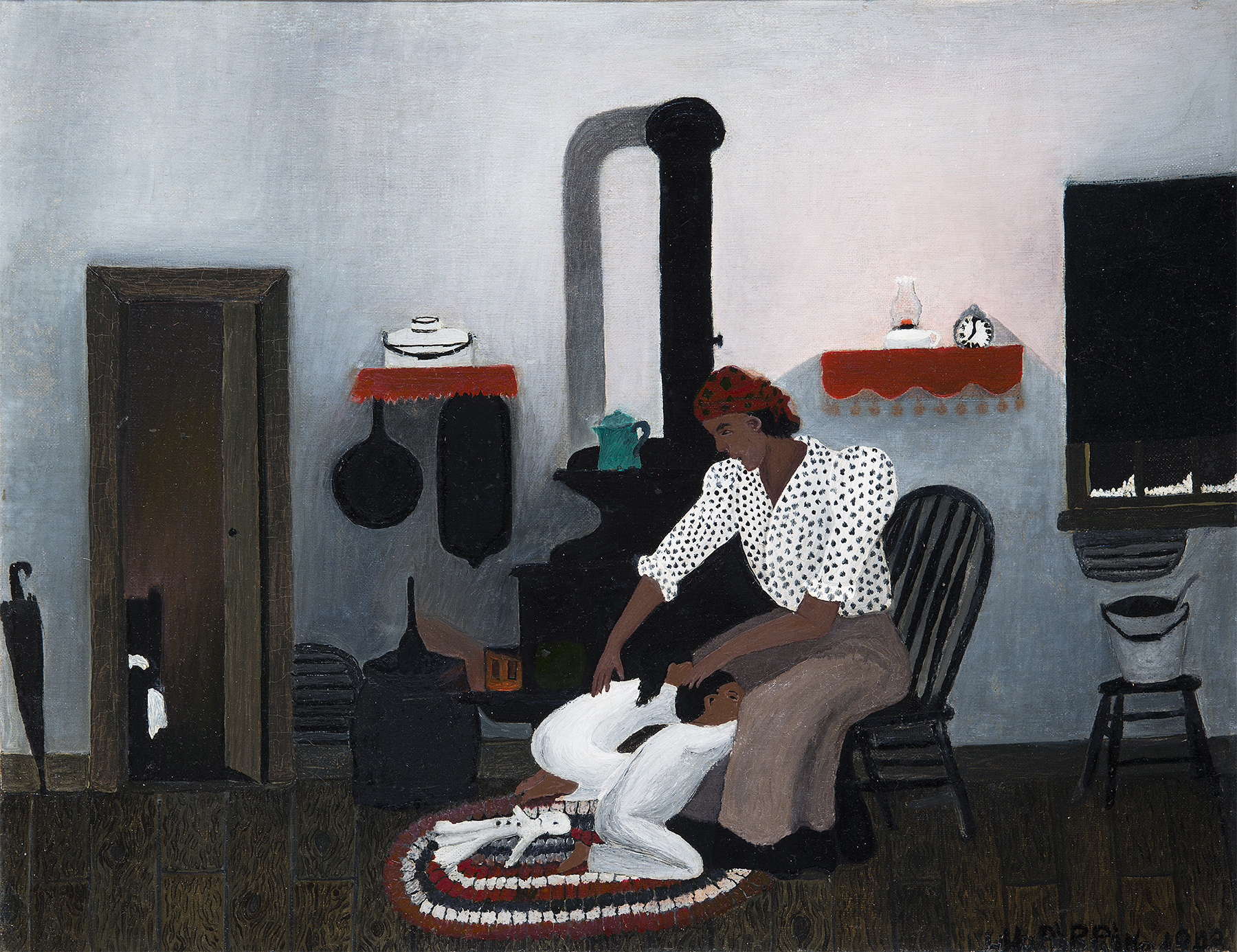The Brandywine River Museum of Art Presents Horace Pippin: The Way I See It
On view April 25 through July 19, 2015
The Brandywine River Museum of Art is organizing Horace Pippin: The Way I See It, a major exhibition of over 65 paintings of his work assembled from museums and private collections across the United States. One of the leading figures of 20th-century art, Horace Pippin (1888-1946) is known for his bold, colorful and expressive paintings of family life, history, religion and war. The Brandywine River Museum of Art will be the only venue for this landmark exhibition.
Taking its title and thesis from Horace Pippin's response to his own question about what made him a great painter: "I paint it exactly the way it is and exactly the way I see it," the exhibition will look closely at Pippin as an artist who remained independent-creating and upholding a unique aesthetic sensibility, vividly depicting a range of subject matter, from intimate family moments and bold floral still lifes, to powerful scenes of war, history and religion that comment on issues such as racism and social justice.
Pippin was born in West Chester, Pennsylvania, less than 10 miles from the Brandywine, but grew up in Goshen, New York. He eventually returned to West Chester in 1920 after serving in World War I as part of the renowned African-American regiment known as the "Harlem Hellfighters." As a returning veteran with a disability-his right arm was severely injured by a sniper while serving in France-Pippin faced much adversity. Yet by 1930, Pippin had begun teaching himself to paint using his left arm as a support for his right hand. He was first championed locally by N.C. Wyeth and the art critic Christian Brinton in 1937, when they saw his work on display in a West Chester store front. Pippin was quickly embraced nationally by museums, galleries, critics and collectors who valued the self-taught artist's style-characterized in his time as "primitive" or "folk"-for its perceived pureness of expression. Patrons ranged from Albert Barnes and Edith Halpert to Hollywood figures such as John Garfield, Charles Laughton and Edward G. Robinson.
Among the works in the exhibition is The End of the War: Starting Home (1930-33), a seminal work representing the horrors of a war that Pippin would later say "brought out all the art in me." A muted palette with bursts of red evokes the sense of desolation amidst the chaos of battle. It is Pippin's first known oil painting, demonstrating his early method of building layer upon layer of pigment in an almost sculptural manner.
Pippin was an astute observer and well-informed about the subjects he undertook-especially history.He completed two major series with historical themes, one on the life of the abolitionist John Brown, and the other on Abraham Lincoln. John Brown Going to His Hanging (1942) is one of Pippin's most visually and emotionally engaging paintings. Brown is portrayed at the center, sitting atop his coffin while being driven to the gallows. While the crowd looks on, a figure to the far right stares out from the painting, representing Pippin's mother who was said to have witnessed the event.
Pippin's art is highly personal, and the artist often drew upon his own life as subject matter. In Interior (1944), a family is together in the same room, yet each member seems lost in their own world. Pippin juxtaposes bold outlines, brilliant passages of color and nuanced texture and pattern in this candid portrayal of family life. He also created several paintings that depicted everyday life in West Chester, Pennsylvania. A particularly captivating example is Harmonizing (1944), which portrays an African American a cappella quartet singing on a street corner. Within this townscape, Pippin focuses attention on the singers by contrasting them and their brilliantly-colored clothing against the stark pattern of the fence, over which a church steeple seems to survey the scene.
Religious themes also held particular significance for Pippin. Among the most compelling is the theme of the Holy Mountain, on which he created four paintings from 1944 through 1946. Inspired in part by Edward Hicks's Peaceable Kingdom series, Pippin focused on the Old Testament text by Isaiah that told of God's founding of his city on the Holy Mountain. Pippin's interpretation, however, goes beyond the biblical into a reflection on the nature of war, peace and racial injustice, with Pippin tying the biblical passage to historical and contemporary events. There is a stunning dissonance between the Arcadian foreground in which Pippin juxtaposes animals and man inhabiting the verdant landscape and the frightening and transgressive happenings in the dense forest beyond. In the first three paintings in the series, Pippin depicts soldiers running through the forest, small grave markers commemorating where some of their comrades have fallen, and bombs dropping from military planes overhead. Pippin wrote that the series was his answer to his dreams of "peace in the land."
Horace Pippin: The Way I See It will be accompanied by a fully-illustrated catalogue featuring essays by exhibition curator Audrey Lewis, and guest authors Judith Dolkart, Jacqueline Francis, Kerry James Marshall, Anne Monahan, and Edward Puchner. It will be available in the Museum shop and online at brandywine.org.
This exhibition is made possible by the Exelon Foundation and PECO. Additional support was provided by the Davenport Family Foundation, the Wyeth Foundation for American Art, and Dr. Benjamin Hammond.


The Brandywine River Museum of Art, located on U.S. Route 1 in Chadds Ford, Pennsylvania, is open daily (except Christmas Day) from 9:30 a.m. to 4:30 p.m. Admission is $15 for adults; $10 for seniors ages 65 and over; $6 for students and children ages 6-12; free for children ages five and under and Brandywine Conservancy & Museum of Art members. Admission is free on Sunday mornings from 9:30 a.m. to noon (except on May 24, during the annual Antiques Show, which is a fundraiser for the Museum Volunteers' Art Purchase Fund, and Art Education and Programming).